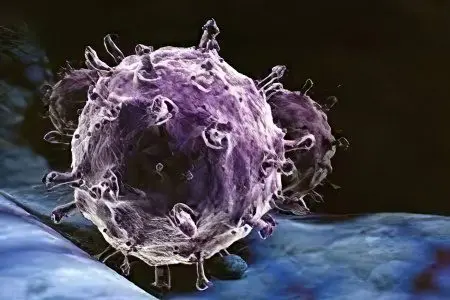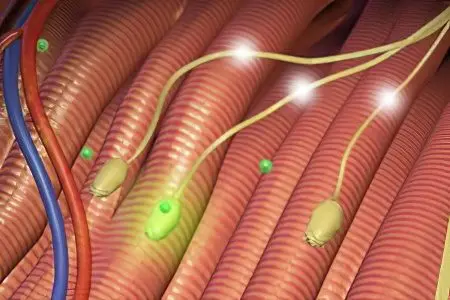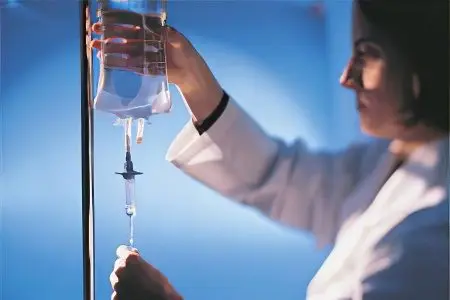Contents

botulism – a disease with which mankind officially met in the 18th century. It was in 1793 that the first blood sausage and fish poisonings were documented in Württemberg, 6 out of 13 victims died. The author of the modern name of the disease was a bacteriologist from Hungary, who at the end of the 19th century extracted the causative agent of infection from the intestines of deceased patients. The invention of the first immune serum against botulism belongs to the same time period.
What is botulism?
Botulism is a dangerous infectious disease that develops as a result of the ingestion of the waste product of the bacterium Clostridium botulinum, botulinum toxin, into the human body. The disease is quite rare today, about 1000 cases per year are recorded worldwide. The disease continues to be deadly. Its main source is food, although others stand out.
The incubation period
On average, the incubation period of the disease can last from several hours to one day. Its duration is determined by the amount of infection in the body. The period from poisoning to the appearance of the first signs of botulism can be up to 2-3 days and even up to 10 days, but such cases are quite rare. Cases were recorded when the duration of the incubation period increased due to the use of alcohol by the patient.
The manifestations of the disease are most often sudden, strongly reminiscent of the symptoms of food poisoning. Toxin with contaminated products is rapidly absorbed into the intestines, enters the bloodstream and instantly spreads throughout the body. In this case, vital organs become the objects of damage.
The earlier botulism makes itself felt, the more severe the course of the disease is.
Does botulism die when boiled?
It is customary to distinguish two forms of existence of botulism bacteria – spore and vegetative. To destroy the vegetative form, it is enough to boil the product for five minutes. The spore variety demonstrates greater resistance to boiling; it is able to endure this procedure for about five hours. Only after this, botulism spores die if the temperature reaches the desired level.
Vegetative forms of botulism, even with slight warming, have the ability to produce spores, nicknamed “dormant”, which germinate in about six months. Such spores show resistance to drying, freezing, and exposure to ultraviolet rays. Airless conditions are optimal for their development.
It is boiling that is the most reliable way to secure canned foods for the human body. Bacteria are not subject to acidic environments, it is useless to fight them with a high content of table salt, they cannot be eliminated by digestive tract enzymes. Boiling alone is an effective preventive measure.
At what temperature does botulism die?
The temperatures sufficient to kill the botulism bacteria depend on the form in question.
Vegetative bacteria are unable to cope with a temperature of 80 °C for more than half an hour. Also, for their complete elimination, five minutes of boiling is enough.
Spores are more stable. To get rid of them, it is necessary to place the bacteria in a 120-degree temperature, maintain this indicator for at least half an hour. For certain strains, this is not enough.
The first signs of botulism poisoning

The first symptoms of botulism are nonspecific, short-lived, and reflect manifestations of infectious intoxication and acute gastroenteritis.
The patient may be concerned about the following problems:
severe abdominal pain, concentrating mainly in the central part;
headache attacks;
manifestations of diarrhea (approximately 3-5 times a day, up to 10);
recurring vomiting;
weakness, fatigue, malaise;
an increase in body temperature up to 40 ° C.
Toward the end of the day, the temperature returns to normal, persistent constipation replaces the excessive activity of the gastrointestinal tract. These “improvements” should not deceive, you should definitely consult a doctor.
Symptoms of botulism and their manifestation
The general symptoms of botulism are characterized by variability, determined by the variant of the course of the disease, its stage. It is customary to distinguish three options: gastrointestinal (the most common), “eye”, acute respiratory failure.
At the initial stage of the development of botulism, the manifestations of the gastrointestinal version of the disease are easily confused with the symptoms of food poisoning:
vomiting (single, double);
cramping pain attacks felt at the top of the abdomen;
diarrhea (diarrhea);
excessive dryness of the mucous membranes of the oral cavity, which does not have a normal explanation.
Also, this variant is characterized by a normal or slightly increased body temperature, a feeling of a “lump” in the throat, associated with poor passage of products through the esophagus.
The “eye” variant of the onset of botulism is less common, the characteristic manifestations are as follows:
visual disturbance;
lack of clarity of the contours of objects;
nets, fog, “flies” floating before the eyes;
the effect of farsightedness, in which the patient does not see near objects well, while distant objects are clearly visible.
In acute respiratory failure, there is a rapid spread of obvious violations of the respiratory process. The patient may have:
respiratory “failures” (change in number, rhythm, tempo);
blue skin;
increased heart rate;
shortness of breath
At the height of the disease, combinations of symptoms from all groups are possible, which are given below.
The patient has the following swallowing difficulties:
he does not give in first to solid food, then liquid foods;
the tongue in the throat remains absolutely immobile;
the tongue also becomes inactive.
The patient can observe eye symptoms of botulism in full swing:
double vision;
eyelids droop;
convergent strabismus appears;
the gaze is difficult or impossible to keep in one direction.
For this stage, violations of sound pronunciation are also considered characteristic. Among them, the following manifestations are possible:

loss of speech associated with the immobility of the vocal cords;
nasality;
sensation of “porridge in the mouth;
hoarseness.
Botulism, which is in full swing, may indicate itself and indirect manifestations:
unsteady gait;
pronounced muscle weakness;
problems with urination, constipation;
feeling of dry mouth;
skin blanching;
rapid pulse.
Rare, but still occurring symptoms: the inability to demonstrate teeth, make a grin, tension in the facial muscles, a twisted face. At the same time, the patient’s body temperature does not rise, hearing remains in order, clarity of thought is maintained, and there are no problems with skin sensitivity.
When the disease enters the final phase, respiratory dysfunction predominates. Patients feel short of breath, forced to interrupt the conversation with pauses, a feeling of constriction or tightness arises in the chest. Respiratory failure increases due to the frequent development of pneumonia.
The final period is characterized by complete relaxation of the skeletal muscles, its doughiness. Patients are unable to hold their head, their movements become very limited. Despite a clear consciousness, complete immobility occurs, respiratory paralysis causes death.
If the sick person does not receive proper treatment, he is threatened with the following complications and consequences.
Secondary bacterial complications. These are atelectasis, pneumonia, pyelonephritis, purulent tracheobronchitis, sepsis.
specific complications. The defeat of the nerve heart nodes, the development of arrhythmias, the defeat of the occipital, femoral, calf muscles with myositis.
Iatrogenic complications (post-treatment). Among them are hyperglycemia, intestinal atrophy, serum sickness, hyperphosphatemia.
On average, the disease can last 3 weeks if the patient receives proper treatment. Restoration of neurological symptoms occurs in the reverse order, first breathing normalizes, then swallowing is restored. Other manifestations of the disease – nasality, headache, and so on, can remain up to 1.5 months. In people who have had botulism, the symptoms disappear without a trace, you can not be afraid of disabling complications.
Causes of botulism

The causes of botulism in humans depend on the form in question. The disease may be:
food;
wound;
“breathable”;
“childish”;
others.
food botulism
Clostridium botulinum is known as an anaerobic bacterium, its development occurs only when oxygen is absent. The food form is threatened if bacteria grow and produce harmful toxins in the food prior to consumption. Bacteria produce spores that are common in the environment, including sea and river water, soil.
The formation of bacteria, the production of toxin are observed in products under conditions of low oxygen concentration, require a certain combination of preservation conditions and storage temperature. In most cases, this affects lightly preserved food products that have not undergone the necessary processing, prepared at home.
An acidic environment is not conducive to the production of toxin, however, the toxin produced earlier cannot be destroyed in it. Storage at a low temperature, reaching a certain concentration of acidity, salt are capable of preventing the growth of bacteria.
Botulinum toxin has been found in many foods. Among them are canned low-acid vegetables – beets, mushrooms, spinach, green beans. The danger is represented by sausages and ham, fish, smoked and salted, canned tuna. The list of “forbidden” dishes depends on the state, local nuances of conservation and nutrition. There are known cases of detection of bacteria in the results of industrial production.
Wound botulism
This form of the disease is much less common than foodborne botulism. It is caused by spores that penetrate into the open wound of the patient, capable of reproduction in such conditions. Signs of the disease in many ways resemble the manifestations of the food form, they can occur after two weeks. The risk group is represented by people suffering from drug addiction, heroin injections are especially dangerous.
“Baby” botulism
This form threatens mainly infants under six months of age. “Children’s” botulism is the result of a child swallowing spores, from which bacteria are released that invade the intestines and produce toxins. After 6 months, children practically do not encounter a similar form; it is not dangerous for adults either. This is due to the fact that the germination of pores is prevented by natural defense mechanisms that the body acquires later.
There are several sources of infection, the most famous and dangerous of them is honey. That is why doctors do not recommend feeding this product to children under the age of one.
Symptoms of the disease in infants also differ:
inability to hold the head;
hoarse crying;
lack of appetite;
weakness;
stool problems;
deterioration of the sucking, swallowing reflex.
Also, children are threatened by household dust and soil. The children’s form is characterized by a long incubation period, babies are more prone to complications such as pneumonia, and the risk of death increases.
“Respiratory” botulism
This form of the disease develops extremely rarely. Its occurrence in natural conditions is not possible, due to deliberate (biological terrorism) and random events associated with the release of toxins in aerosols. The same clinical manifestations that can be observed with food botulism are characteristic. The speed of the onset of the first symptoms depends on the level of poisoning, on average it takes 1-3 days.
Other forms
Theoretically, the spread of the disease through water cannot be ruled out if a previously produced toxin is ingested. However, the danger is minimal, as wet processing causes the destruction of bacteria. Doctors make the diagnosis of “indeterminate botulism” if it is not possible to establish the source that provoked the wound or food form of the disease in the patient.
Prevention of botulism

In recent years, cases of botulism in Russia are mainly associated with poisoning with canned home-made foods. Therefore, preventive measures are primarily in this area. The safety of “jars” cannot be established by eye, botulinum toxin does not lead to a change in the color, smell or taste of food.
Products that serve as the basis for the manufacture of home canned meals must be thoroughly cleaned of dust and dirt. It is advisable to remove soil particles with a brush.
The same applies to canning utensils – jars, lids. Products must be washed, scalded and dried. Tin lids need to be boiled.
There are foods that doctors advise to completely abandon canning at home. These are meat, fish, mushrooms and greens. Mushrooms are especially dangerous, which account for, according to statistics, approximately 70% of all cases of botulism. Meat and fish can be preserved only if an autoclave is used, the products must be fresh.
Overripe, stale, spoiled fruits and vegetables should not be used.
Immediately before eating, it is advisable to boil such food for half an hour, this will eliminate the toxins that could be formed. This rule is especially important for children sensitive to botulinum toxin.
The storage temperature of products that cannot be cooked must not exceed 10 °C. We are talking about fish, salted and smoked, sausages, lard.
Swollen banks will certainly be selected, destroyed.
It is strictly forbidden to buy vegetables or mushrooms rolled up in jars created at home in the markets from strangers.
If one of the family members falls ill, all household members who ate the same food as him need the introduction of prophylactic serum and medical supervision for 10 days. Be sure to disinfect the dishes from which the patient ate, his clothes.
When it comes to wound botulism, the only preventive measure is competent treatment of the wound in the hospital.
Treatment of botulism

Each person who is suspected of having botulism of any severity is immediately hospitalized, since the possibility of complications and the nature of the course of the disease cannot be predicted. For others, such patients are not dangerous, the disease is not transmitted by airborne droplets.
The likelihood of a sudden drop in blood pressure, pronounced muscle weakness are the reasons why patients are shown strict bed rest. If the case is severe, the patient is fed intravenous nutritional formulas or a nasogastric tube is used. The treatment menu in mild cases implies the rejection of products rich in extractive elements, fatty and spicy dishes. The patient is prescribed diet number 10.
The question of whether a patient admitted with botulism needs immediate ventilation of the lungs is decided by the doctor in the emergency department. It is the respiratory “failures” that pose the greatest danger to the life of such patients, so adequate ventilation plays an important role.
If there is a threat of developing acute respiratory failure, patients need to establish the vital capacity of the lungs, constant pulse oximetry. There are frequent cases of development of acute respiratory failure with incredible speed. The question of the need for ventilation and intubation arises if the vital capacity of the lungs is reduced by less than 30%, paralysis progresses rapidly, hypercapnia and hypoxemia are present. The patient may experience the need for ventilation and intubation from several days to several months.
If the patient has urinary retention, he is prescribed catheterization, carried out through Foley catheters. This avoids the development of an ascending urinary infection.
If the patient does not have obvious respiratory disorders, the doctor resorts to emergency detoxification technologies. Washing the intestines and stomach is a procedure of paramount importance, they help to destroy the toxin, get rid of the substance that has not yet been absorbed. The first washing is done on the basis of pure boiled water, its samples are then subjected to a specific analysis.
The patient is not prescribed laxatives to avoid activation of paresis of the intestines, the development of neuromuscular disorders. A probe is used to flush the stomach, portions of the liquid should be small, especially if the patient has respiratory failure. Otherwise, there is a risk of reflex respiratory arrest.
If the patient has bulbar disorders, the introduction of the probe should be carried out as carefully as possible, while using a laryngoscope. This makes it possible to avoid penetration of the probe into the trachea, which is important due to the absent gag reflex, paresis of the muscles of the palate.
Gastric lavage is prescribed for any period of hospitalization of the patient. However, a severe condition, in which there are serious respiratory disorders, may force the doctor to limit himself to bowel lavage and ventilation of the lungs. In this case, flushing begins with the administration of a siphon enema, which leads to a reduction in abdominal distension and provides the necessary conditions for lung excursion. As a result, gastric lavage is more easily tolerated by patients with botulism. Siphon enemas are given daily, the procedure is repeated twice a day if there is severe bloating.
The next task is to neutralize the toxin circulating in the blood. At any stage of botulism, the patient is administered an anti-botulinum heterogeneous serum. For the introduction of PBS, a supraclavicular vein catheter is used.
Severe cases
Anaphylactic shock is considered the most dangerous complication that can occur in a patient during the treatment of botulism. The condition can occur immediately, regardless of the strict observance of all important rules. In addition, some patients who have undergone serotherapy develop serum sickness after 7-10 days.
If the course of the disease is severe, progresses instantly, PBS is administered by drip intravenously. After 12 hours, an intramuscular injection of a similar dose is carried out. You can enter the serum for the third time after the day. More than 4 times the drug can not be prescribed.
Hyperbaric oxygen therapy is an effective treatment technology that allows tissues to be under high partial pressure, including severe histotoxic hypoxia. For the introduction of the drug, a central access is prepared, a catheter of the supraclavicular vein is used. Be sure to use hypocoagulant drugs as a tool for the prevention of vein thrombosis.
Additional treatment
There are also secondary treatments that are considered complementary in the fight against botulism. In order to avoid the development of a secondary infection in a patient (pyelitis, pneumonia), he may be prescribed penicillin, clindamycin, chloramphenicol and other antibiotics. In terms of eradication of the causative agent of the disease, they are useless, if we are not talking about a wound or infantile form. If the patient has wound botulism, surgical treatment of the wound is mandatory.
Treatment of botulism at home

Botulism is a deadly disease that you cannot fight on your own. A number of actions can be taken before the ambulance arrives if it is delayed. The patient can take a laxative, say magnesium sulfate, half a glass of vegetable oil, which has a binding effect on harmful toxins. A cleansing enema with herbal decoction or highly diluted potassium permanganate helps.
Gastric lavage will also be appropriate, it is advisable to choose a 2% soda solution for this. This tool provides an alkaline environment that has a devastating effect on botulinum toxin. This procedure is especially effective in the first two days, it is still possible for the infected product to remain in the stomach.
However, the success of rehabilitation after inpatient treatment largely depends on the patient. The stay in the hospital on average lasts up to 10 days until the disappearance of all neurological disorders in the patient. The severity of the transferred disease determines the duration of the sick leave, which can be issued for 1-2 weeks.
A person who has had botulism should be under the supervision of a local therapist for 2 weeks after discharge. If he has residual effects, it is also necessary to observe a cardiologist (with myocarditis), a neuropathologist, an ophthalmologist (with consequences associated with the organs of vision).
If there are indications during the recovery period, the attending physician may prescribe medication to the patient – drugs against atrophy of the optic nerves, vitamins, nootropics, cardiovascular agents.
For 3 or more (according to indications) months, the patient should avoid excessive physical activity. Under the ban are specialized sports training, hard physical labor, work that implies strong stress on the visual analyzer.
A patient who has had botulism should pay special attention to his diet, its calorie content and composition. It is recommended to eat 4 times a day, doing it at set time intervals. It is not allowed to include fatty and spicy dishes in the menu, it is necessary to limit the intake of salts. It is advisable to abandon animal fats in favor of vegetable fats, to provide a sufficient amount of protein. The lack of vitamins can be replenished by taking special complexes – complivit, vitrum, alphabet, and so on.
Also, a person who has had botulism can be prescribed physiotherapy procedures. This includes water manipulations (therapeutic showers, baths), hardening, oxygen inhalations, electrosleep. This is necessary to get rid of the residual effects of hypoxia if the disease was acute. Wellness procedures of a general nature will also bring benefits, including therapeutic exercises, massage, swimming in the pool. All this together will accelerate the process of restoring the normal functions of the muscular system.
The doctor may recommend that the patient spend a rehabilitation period in a sanatorium that specializes in diseases of the nervous system.
ethnoscience
As a rule, doctors do not object to the patient’s treatment during the rehabilitation period to folk remedies, but it is still worth consulting with a specialist before using them. If the acute manifestations of the disease are already behind, decoctions of plantain, echinacea, nettle can be used.
Cinnamon is also highly valued by folk healers in the fight against botulism. To prepare a decoction, you will need to mix 200 grams of cold water with a teaspoon of chopped cinnamon. The mixture is brought to a boil, boiled for three minutes, stirred. If a gelatinous mass occurs, remove the composition from the fire. Drink a decoction of cinnamon slightly chilled. If it is used to treat a child, the addition of sugar is allowed.
With timely access to a doctor and proper treatment, the prognosis for patients with botulism is favorable.









